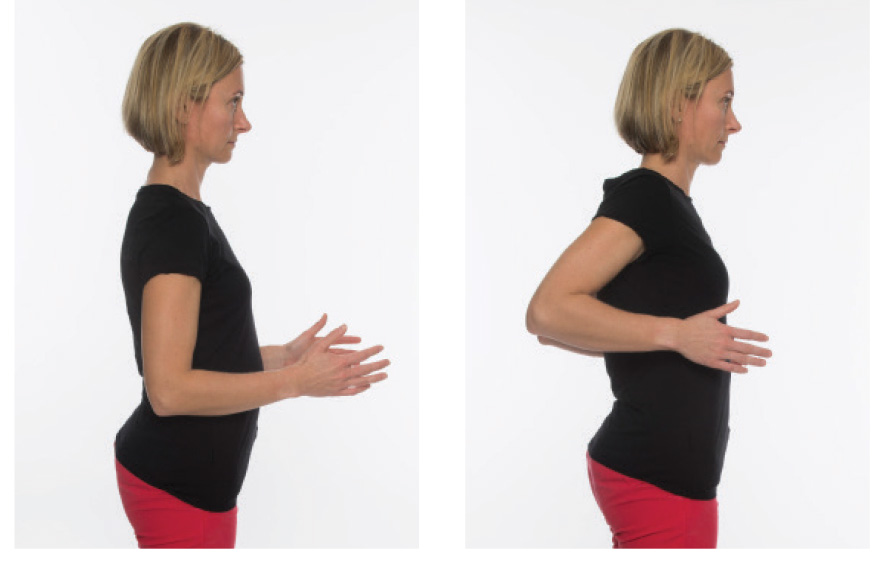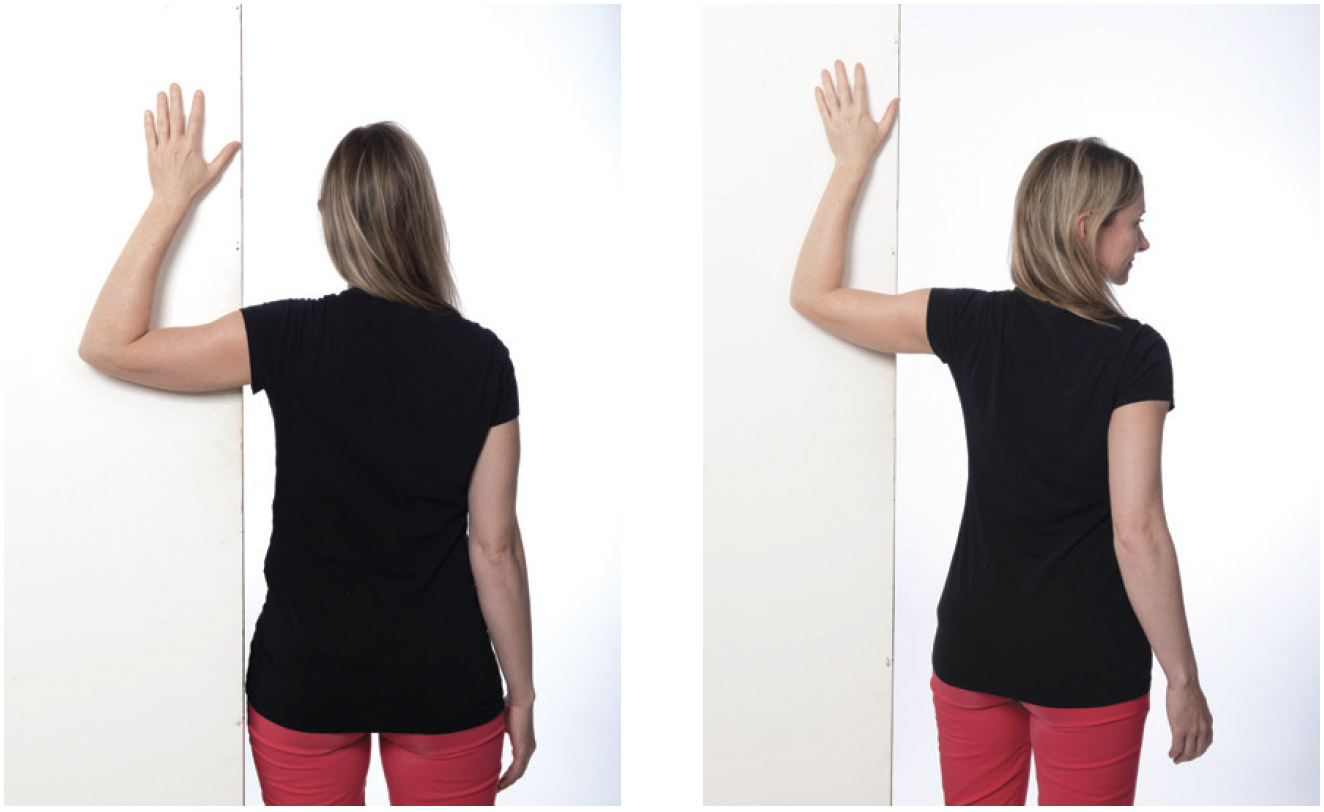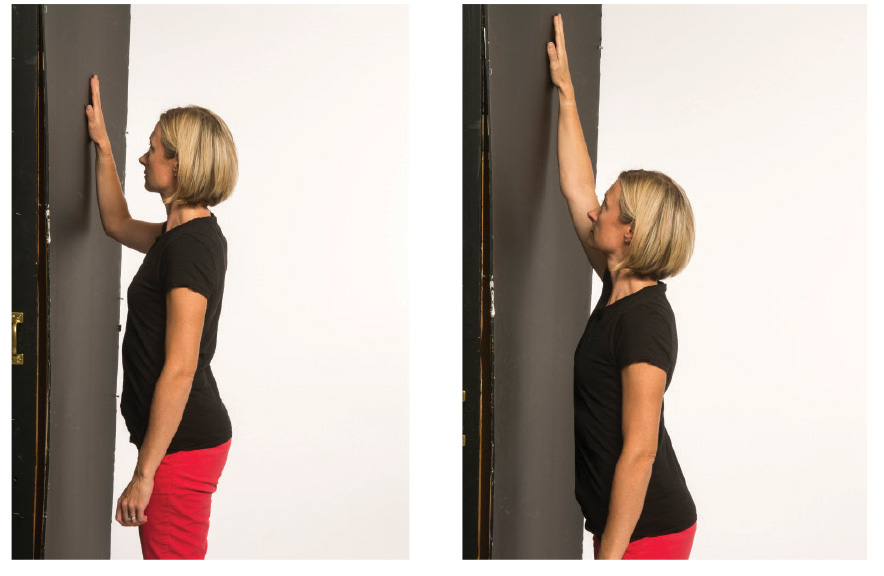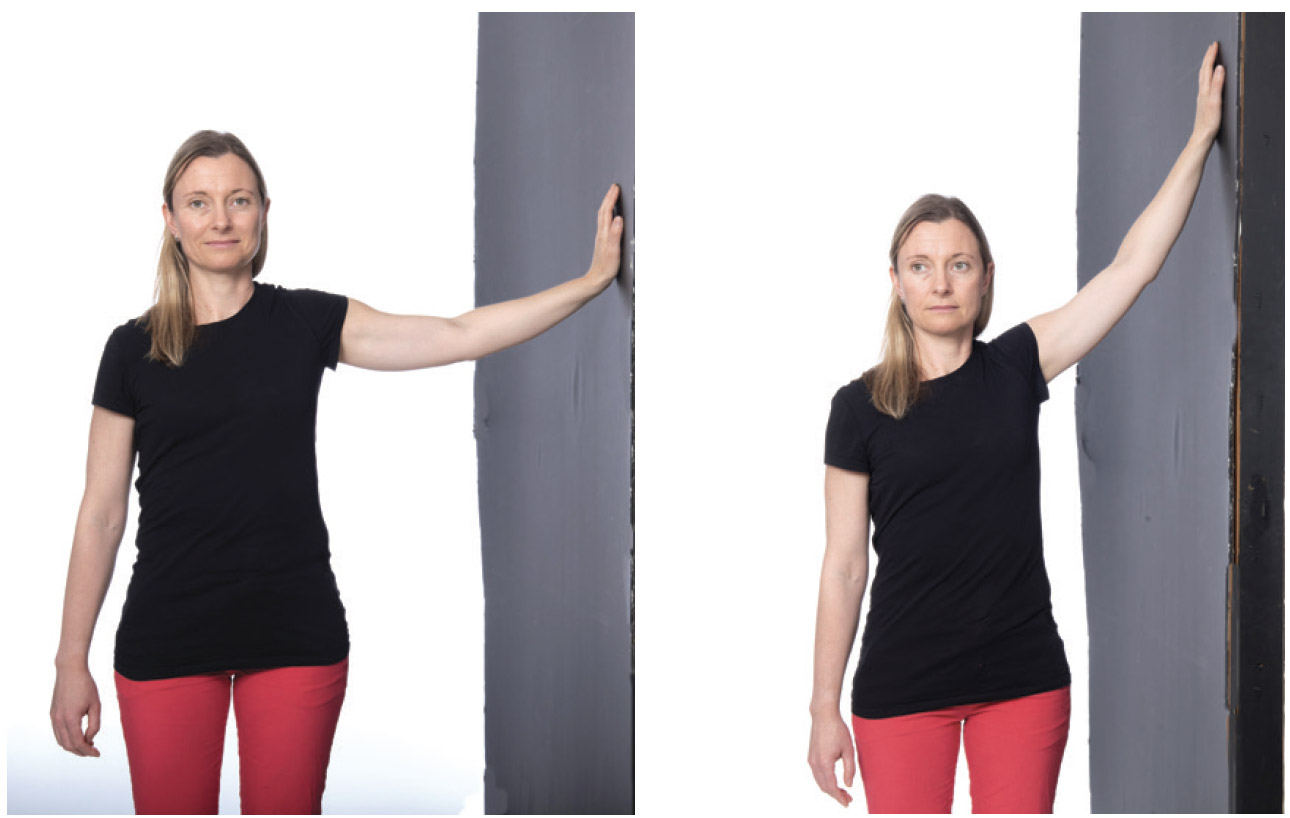Exercises After Surgery
- Returning to normal movement is important after surgery. If you have problems moving, your doctor can refer you to a physiotherapist.
- Begin the following exercises 1 day after surgery. The exercises should be done 3 times a day until you have full movement.
- If pain is stopping you from doing your exercises, use your pain medication 30 minutes before exercising.
- It is normal to feel a gentle stretch while exercising but you should not feel a sharp pain.
- Wear comfortable loose fitting clothing while doing the exercises
Stage 1: Exercises to do while you still have your drain in place
1. Pump It Up
This exercise helps reduce swelling after surgery by using your muscles as a pump to improve the circulation in your affected arm (on the same side as your surgery).

- Lie on your unaffected side with your affected arm straight out, resting on top of a pillow.
- Slowly bend your elbow while making a fist at the same time.
- Next, slowly straighten your elbow while opening your fist at the same time.
- Repeat this pumping motion 15 to 25 times.
2. Shoulder Circles
This exercise can be done sitting or standing. It's a good warm-up exercise.

- Lift both shoulders up toward your ears. Keep your chin tucked in slightly.
- Gently rotate both shoulders forward, and then slowly down and back, making a circle.
- Make 5 slow circles in one direction, then switch and make 5 slow circles in the opposite direction.
3. Arm Lifts
This exercise can be done sitting or standing. It helps with movement in your shoulder.

- Clasp your hands together in front of your chest. Point your elbows out.
- Slowly lift your arms up until you feel a gentle stretch, but no pain.
- Hold for 10 seconds (or 5 deep breaths) and then slowly return to the start position.
- Repeat 5 to 10 times.
4. Shoulder Blade Squeeze
This exercise can be done sitting (without resting your back on the chair) or standing. It helps to stretch your chest muscles.

- Hold your arms at your side against your body with your elbows bent.
- Slowly bring your elbows straight backwards, while squeezing your shoulder blades together to feel a gentle stretch.
- Hold this position for 10 seconds (or 5 deep breaths) and then slowly return to the start position.
- Remember to keep breathing throughout the stretch.
- Repeat 5 to 10 times.
Stage 2: Exercises to do after your drain has been removed
You no longer need to do the previous exercises (Stage 1).
1. Wand Exercise
You will need a "wand" to do this exercise – try a broom handle, stick or cane.

- Lie on your back with your knees bent. Hold the wand with both hands. Your hands should be as wide apart as your shoulders.
- Lift the wand over your head as far as you can until you feel a gentle stretch, but no pain. Your unaffected arm will help lift the wand higher.
- Hold for 20 to 30 seconds, and remember to breathe. If you find this stretch is too painful, lower your arms slightly, but continue to hold. Then, gently lower arms to the start position.
- Repeat 5 to 10 times.
To progress, repeat this exercise with your hands slightly wider apart than your hips or shoulders.
2. Corner Wall Stretch
This exercise is more advanced, so be sure to start with a small hip rotation and perform slowly.

- Stand with your affected arm against the corner of a wall (door frame works as well) with your armpit in the corner and side of your hips pressed against the wall.
- Make goal post arms (picture 1) with affected arm while keeping armpit and hips glued in the same position against the wall.
- Take small steps to turn hips away from the wall (picture 2) until you feel a stretch in any areas of tightness while keeping armpit glued to corner of wall (or as close as possible).
- Hold stretch for 20 to 30 seconds and remember to breathe. If you find the stretch is too painful, back off a little by rotating hips back towards the wall until it feels comfortable, then continue to hold.
- To come out of stretch, take small steps to return to start position. Then, slide hand down the wall.
- Do a couple shoulder rolls to reset, then repeat 3 to 5 times.
Remember, it may take 6 to 8 weeks to regain full movement of your arm(s). If you continue to have difficulties regaining full movement in your arm(s) and shoulder(s) after this time, please ask your surgeon for a referral to physiotherapy and occupational therapy for follow up.
If you receive radiation treatment after surgery, it is important to continue with wall climbing exercises and the corner wall stretch throughout radiation. It is recommended to do a set of these exercises before and after radiation each day to maintain your shoulder movement and to prevent side effects such as radiation-induced fibrosis (RIF) which can make your arm movement difficult again.
3. Wall Climbing
This exercise helps with movement in your shoulder. Try to reach a little higher on the wall each day. This exercise is done in 2 positions – A) facing the wall and B) with the side you had surgery on close to the wall.
a. Facing the wall

- Stand facing the wall.
- Place the palm of your hand (of your affected arm) flat against the wall.
- Slowly slide your hand up the wall as high as you can go until you feel a stretch, but no pain. Make sure the movement is only coming from your shoulder and you are not bending at your back to get higher up the wall.
- Hold for 20 to 30 seconds and remember to breathe. If you fi nd the stretch is too painful, lower your arm slightly, but continue to hold.
- Slowly slide your hand down the wall to the start position.
- Do a couple of shoulder rolls to reset, then repeat 3 to 5 times.
b. Side wall stretch

- Stand with your affected side to the wall.
- Place the palm of your hand flat against the wall at shoulder height.
- Slowly slide your hand up the wall as high as you can go until you feel a stretch but no pain. Do not rotate your body toward the wall, even if it means you can’t go up as high.
- Hold for 20 to 30 seconds and remember to breathe. If you find the stretch too painful, lower your arm slightly, but continue to hold.
- Slowly side hand down the wall to return to the start position.
- Do a couple of shoulder rolls to reset, then repeat 3 to 5 times.
4. Side Bends
This exercise is more advanced and can be performed once a day when you feel ready.

- Sit in a chair and hold your hands together in your lap.
- Slowly lift your arms over your head.
- Bend at your waist to move your body to the right. Use your right hand to gently pull your left arm a little farther to the right. Keep yourself firmly planted on the chair.
- Hold this position for 5 seconds and then slowly return to the start position.
- Repeat this stretch to the left side, using your left hand to pull your right arm farther.
- Repeat 5 to 10 times on each side.
It may take 6 to 8 weeks to get full movement back in your arm and shoulder. If you have difficulty getting full movement in your arm and shoulder after this time, please ask your surgeon for a referral to physiotherapy and occupational therapy for follow-up.
When can I return to my regular exercise routine?
- Be active to help with your recovery from surgery.
- You can start or return to your exercise program after speaking with your surgeon at your follow-up appointment.
- Start back slowly and gradually.
- You can start exercising with light weights (2 pounds) about 4 to 6 weeks after surgery.
- You can do exercises that speed up your heart like walking as soon as you feel ready.






